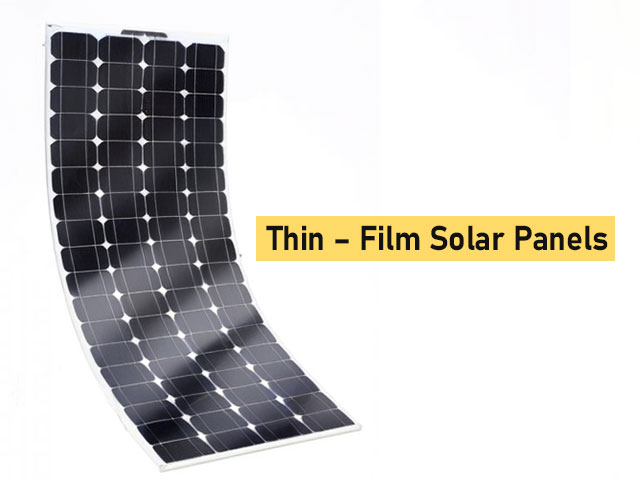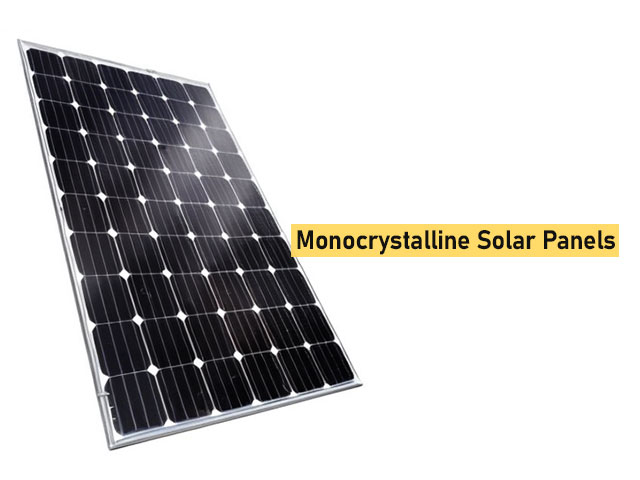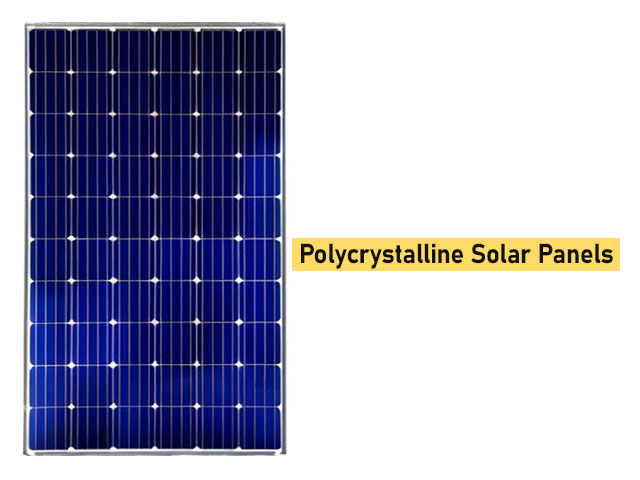We are using many conventional methods to generate electricity, which involves burning coal, rotating windmills, or even Nuclear fission, or we do something else, that helps us produce electricity. But still, there is a powerhouse of energy sitting at the center of our Solar System. Come on, no surprises here – I am talking about the Sun.
You might have seen solar panels in many movies, in fields, and even on the rooftops of homes and offices of many people. Solar Energy and Solar panels a very interesting areas of study, and they can be very useful in the long term, and in the future(of course). So, in this article, we are going to have a look at everything we need to know about Solar Panels, because it’s something that’s gonna help you a lot, in powering your houses(or offices), and bringing down your Electricity bills.
Solar Panel: Everything You Need to Know
What is Solar Energy, and why Solar Energy?
Today, when we can generate electricity through many different means, like burning coal, windmills, hydropower, or something else, then why do we need Solar energy? The thing is that oil, coal, natural gas, and nuclear energy, are all forms of non–renewable energy. It simply means that it’s the energy derived from finite resources on the earth. So, it’s not ok to simply rely on those resources, and do nothing, because they will be finished soon, and then what?
So, then we look up in the sky(in the daytime), and we look at the powerhouse, which is powering almost the whole world, every day. There are places on Earth, where the sun doesn’t rise for days.
Fact: You may read about Utqiagvik. No, I didn’t type any random keys on the Keyboard. Utqiagvik(formerly Barrow) is a city in Alaska, where there are 67 days of darkness.
So, Solar Energy appears to be one of the best options for us to meet the future requirements of energy, where we are consuming more and more electricity every single day. Soon, we may find people farming energy, to make some money, or maybe it would be something completely different, that gives us more energy.
With time, the cost of solar panels has been decreasing, and the demand has been surging. You may see more and more rooftops powered up with Solar Panels.

Where did it all start?
Many people think that solar energy is something new in focus now, but that’s not true. It all started around 1839, when Edmond Becquerel, a French Scientist, discovered the Photovoltaic effect, realizing that when the electrons are in an excited state, in the conduction band, they could move freely through the material, this would create a current.
So, the first Solar Panel was invented by Charles Fritts in 1883, and it had a conversion efficiency of only 1%. This sparked the movement for producing solar energy. So, for someone who might be thinking that it’s a technology that may be a decade old, well, it’s older than most of us.
How do solar panels work?
We are not going to go much technical on this topic, but I think everyone should know a little bit about how solar panels work, so, we will understand how the solar panels work, and how the electricity is generated.
First of all, understand what solar panels are made up of, or what makes them such that they can somehow produce electricity. So, most commonly, you would see that Solar Panels are made using Crystalline Silicon(C-Si). Let me tell you that silicon is the second most abundant element on the Earth(after oxygen). Other types of panels include panels made up of Cadmium Telluride, Thin-film amorphous silicon, and more.
Let’s talk about Silicon. It’s a semiconductor, which means that it conducts electricity in certain conditions, but not the others. So, how the solar panels work? This is the question that we will try to answer now and that too, in simple terms.
Remember the Photovoltaic effect mentioned above? Well, it’s just how the sunlight gets converted to electricity. This is what’s powering the solar panels. Let’s try to make sense of what happens when sunlight hits the Solar Panels.
So, the Solar Panels are made out of Photovoltaic cells, which help convert the sun’s energy into electricity. There are layers of semiconductor materials, like Silicon, and between them, the photovoltaic cells are there. Each layer has different electronic properties(P-type, and N-type), which get energized when the photons from the sunlight are hit, thereby creating an electric field.
This is known as the Photoelectric effect, and it creates the current needed to produce electricity.
In simple language, you may understand it like this – When sunlight hits the solar panels, it transfers the energy, making the electrons excited in the semiconductor, and then they flow, creating an electric current.
The thing is that electricity is generated in the form of a Direct Current(DC), but most of our everyday needs for electricity are fulfilled by Alternating Current(AC). So, in that case, the DC electricity generated from the solar panels is fed to the inverter, and the inverter converts the DC to AC electricity, making it super useful for most household appliances. This converted electricity can be easily used to power electric appliances in your house or business, in real time.
Also, if the whole system is generating more than enough electricity, then it can be fed back to the grid, or it can also be stored in the batteries for later use.
If we look at the concept of solar panels closely, it is very interesting, and game-changing, because the Sun has the potential to power up almost the whole world’s electricity, and we are not able to utilize even a small portion of the Sun’s potential. But I am looking at this as a futuristic scenario, where we have a potential abundance of electricity, where Electricity is almost, or completely free.
Types of Solar Panels
Now let’s focus on the different types of solar panels. If you have seen solar panels in your neighborhood, or even on the internet, or even in your own house, you might have seen some blue-colored solar panels, with a collection of a certain number of solar cells. But here, let’s discuss some types of solar cells. First of all, let’s list out the types of solar panels that we are going to discuss –
- Thin–Film Solar Panels.
- Monocrystalline Solar Panels.
- Polycrystalline Solar Panels.
- PERC (Passivated Emitter and Rear Contact Cells) Solar Panels.
These solar panels are categorized according to the types of solar cells present in the Panel. Each cell has a different appearance and has different characteristics. So now, let’s try to get some more information about the above-mentioned types of Solar Panels.
Thin-Film Solar Panels

The Thin-Film Solar Panels are made up using Photovoltaic substances, including Amorphous Silicon, Copper Indium gallium selenide(CIGS), and Cadmium Telluride. They are manufactured by depositing these substances on a solid surface, like plastic, glass, or metal, and they are very lightweight and make it easy to install.
Monocrystalline Solar Panels

These types of solar panels are also called single crystal panels, which are made up of pure silicon, and sliced into wafers to form cells. These wafers are seen as octagonal shaped, giving them a unique design, and uniform color. Also talking about the color, since they are made up of pure silicon, they appear dark blue or black.
While we are not going to go into greater detail about Monocrystalline solar panels, let’s get into something interesting about Monocrystalline Solar Panels. There is something called Half Cut cells, which is a technology used for improving the overall efficiency and performance of solar panels.
The top half cells are connected in one series, and the bottom half is connected to another series, so if there is a shadow on one side of the series, the other series can continue with the power generation, improving the overall efficiency.
Just the thing is that these panels are a little more expensive, in comparison to the other solar panels, due to the complicated manufacturing process.
Polycrystalline Solar Panels

From the name only we can understand a few things, like just like Monocrystalline Solar panels are made with a single crystal, Polycrystalline Solar Panels (also called “Multi-crystalline” panels) are made up of multiple silicon crystals. The silicon is melted and poured into the square molds. After the cooling, they are sliced into thin wafers, and they are assembled to form Polycrystalline Solar Panels.
It is very easy to identify this type of Solar Panel. The cells are square-shaped, and they are shining blue. However, it is seen that the efficiency of these types of panels is lower in comparison with the Monocrystalline Solar Panels.
PERC(Passivated Emitter and Rear Contact Cells) Solar Panels
PERC(Passivated Emitter and Rear Contact Cells), also known as rear cells, this type of solar panels are manufactured using advanced technology, and the name is also very advanced.
When it comes to traditional solar panels, they can absorb sunlight only to some extent, but other light passes through them. But in the PERC Solar panels, there is another layer added on the back of solar cells, which enables the Unabsorbed light to be absorbed by the rear side of the panels, hence improving efficiency.
This technology is typically combined, with the Monocrystalline cells, to produce high quality and highly efficient MONO-PERC panels.
Advantages and Disadvantages of Solar Panels
No technology is very much perfect, and just like any other technology, Solar panels, or Solar Electricity generation systems may also have a handful of advantages and disadvantages, which we need to be familiar with so that we can be conscious of them, and if in case someone is seeking an opportunity, they may find a gap in some area, and excel. Well, here are some of the advantages and disadvantages of Solar Panels.
| Advantages of Solar Panels | Disadvantages of Solar Panels |
|---|---|
| Solar panels harness energy from the sun, providing a sustainable and infinite power source. | Installation costs can be significant, including solar panels, inverters, and installation expenses. |
| Solar panels have minimal ongoing maintenance costs, making them cost-effective over the long term. | Energy production is dependent on sunlight, making it less efficient during cloudy days and at night. |
| Solar energy is clean, producing no greenhouse gas emissions during operation, contributing to a greener environment. | Large-scale solar power plants may require extensive land, impacting ecosystems and limiting availability. |
| Solar panels can significantly reduce or eliminate electricity bills, providing substantial long-term financial benefits. | Storing excess energy for non-sunny periods can be challenging and requires additional technology like batteries. |
| Solar panels allow users to generate their electricity, reducing reliance on centralized power grids. | The production and disposal of solar panels can have environmental impacts, including the use of certain materials and waste generation. |
As you can see, there are some advantages and disadvantages of Solar Panels. Solar Energy can be something very revolutionary, but some things need to be handled, like the efficiency of conversion of energy from the Sun. But I think that in general, the Sector of Energy is something that’s going to shine in this decade, solving some huge problems, so someone who works out to tackle those problems, can have a bright future.
Are solar panels efficient?
When we think about Solar panels, we may end up thinking that once we set up the solar panels, all the sunlight that’s falling on the panels is being converted to electricity, but that’s not true, at least for today(someone might be working to solve this problem).
As an interesting fact, the first solar panels that were invented had only 1% efficiency, and it sparked the potential of converting solar energy to electricity, enabling more experiments for better efficiency. The efficiency as of right now is something around 23-25%, and that’s an incredibly great thing for today, as it saves us a good sum of money(which we otherwise would spend on electricity).
There are some other parameters that you might want to consider, but at this efficiency, solar panels are pretty good. It is quite costly today to buy solar panels, but you should always consider what efficiency solar panels are you buying because that would matter a lot.
Final Note
So, we discussed some important things about Solar panels, that you should know about. Whether you are someone who wants to get Solar Panels for themselves, or someone who wants to get some information about Solar panels, this article should help you mostly.
Out of that, I would encourage you to explore Solar Panels and the field of energy in general, because the increasing energy consumption is going to demand more energy in coming years, and it has become important for us to find out ways through which, we can get energy efficiently, without harming the Planet, resources, and humans.
So, you may also read about some renewable resources of energy, which you can count on, and which are also not harmful to the Planet. In general, the field of energy is important, While Solar Energy has great potential, within time, we might find another source of energy, that would help power our most of electrical appliances.
For example, Wind turbines generate electricity, but we have seen huge windmills and wind turbines, that help us to do so. But I came across a groundbreaking innovation, called O-wind, which is a turbine, that can rotate for winds coming from any direction, and it’s so small that it can be installed in your house very easily, so it’s something else that solved a ground-breaking problem, so that you don’t have to establish a windmill for yourself. You may read about O-Wind and explore more.
FAQs related to Everything you need to know about Solar Panel
Ans: Common types of Solar panels are made up of Crystalline Silicon, and some other types include cadmium telluride, thin film amorphous silicon, and more.
Ans: With more research and development in Solar Panels, we are achieving greater efficiency, around 23 to 25%.
Ans: There are different types of solar panels, like Monocrystalline Solar Panels, Polycrystalline Solar Panels, Thin Film Solar Panels, and more.

